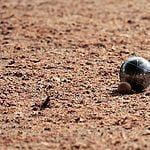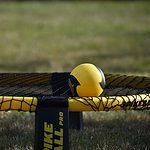When it comes to playing pickleball doubles, there are specific strategies and rules that can significantly impact your game. Understanding how to effectively work with your partner, master the art of volleys, and navigate the court can make all the difference in your success on the pickleball court.
By focusing on technique and coordination rather than sheer power, you can elevate your gameplay and outmaneuver your opponents. Ready to enhance your pickleball doubles skills and take your game to the next level?
Key Takeaways
- Master the underhand serve below the waist and proper positioning for effective serving.
- Respect the non-volley zone, adhere to the Double Bounce Rule, and practice accurate line calls.
- Avoid faults by communicating well, transitioning quickly, and staying out of the non-volley zone during volleys.
- Equip with essential gear, understand court layout, strategize with varied serves, and support each other for effective teamwork.
Pickleball Doubles Serving Rules
Mastering the art of serving in pickleball doubles requires precision and finesse, as players must adhere to specific rules for underhand serves below the waist. In doubles pickleball, serving is a crucial aspect of the game, setting the tone for each point. When serving, you must stand behind the baseline and make an underhand serve that travels diagonally to the opponent's service area on the other side of the court. Remember, each team only has one chance to serve per point, so accuracy is key.
Additionally, in pickleball doubles, there are specific rules regarding the non-volley zone. After the serve, both teams must adhere to the non-volley zone, also known as the kitchen. This area extends 7 feet from the net on both sides and restricts players from volleying the ball while inside it. Understanding the rules and strategies of serving in doubles matches can give you a competitive edge against your opponents. By mastering the art of serving in pickleball doubles, you can control the game's pace and create opportunities to score points efficiently.
Understanding Doubles Pickleball Scoring
After understanding the rules of serving in pickleball doubles, grasping the scoring system is essential for ensuring a competitive and fair game. Here are some key points to help you understand the scoring in doubles pickleball:
- Serving Team's Score: Only the serving team can score points in doubles pickleball. This means that if the serving team wins a rally, they'll earn a point.
- Receiving Team's Score: The receiving team doesn't score points directly. However, if the receiving team wins the rally, they'll earn the serve and the opportunity to score.
- Switching Sides: Players switch sides after scoring a point in doubles pickleball. This ensures fairness and equal playing conditions for both teams throughout the match.
Understanding these scoring rules is crucial for players looking to improve their game and implement effective pickleball doubles strategies. By mastering the Double Bounce Rule and keeping track of both the serving and receiving teams' scores, you can navigate the rules for doubles pickleball confidently.
Mastering Volleys in Doubles Pickleball
To excel in doubles pickleball, honing your skills in executing precise volleys at the net is crucial for gaining a competitive edge on the court. Volleys, where the ball is hit before it bounces, are vital shots that require proper technique and positioning. When at the kitchen line, ensure your feet stay behind the non-volley zone line to avoid faults. Good positioning and quick reactions play a key role in effectively executing volleys and maintaining control of the game.
Mastering volleys allows you to keep the pressure on your opponents, dictating the pace and flow of the match. By strategically placing your volleys, you can set up your partner for winning shots or force errors from the opposing team. This level of control not only helps in scoring points efficiently but also in dominating the game. So, practice your volleys diligently to elevate your doubles pickleball game and increase your chances of success on the court.
Non-Volley Zone Etiquette
Positioning yourself correctly outside the non-volley zone is essential for maintaining fair play and maximizing your shot selection during a game of doubles pickleball. When it comes to non-volley zone etiquette, here are three key points to keep in mind:
- Stay out to Stay Fair: Players must respect the 7-foot area on either side of the net, known as the non-volley zone or kitchen, except when hitting a ball that has bounced. By adhering to this rule, you ensure fair gameplay and prevent any advantage gained from stepping into this restricted area.
- Mind Your Moves: Avoid stepping into the non-volley zone prematurely, especially when volleying. This helps in upholding the integrity of the game and ensures that exchanges near the net are skillful and based on strategy rather than proximity to the kitchen.
- Position Wisely: Strategic positioning outside the non-volley zone allows for better control and shot selection. By staying out of the kitchen when it's not your turn to be in there, you set yourself up for successful plays and collaborative gameplay with your partner.
Double Bounce Rule in Pickleball
In pickleball doubles, the Double Bounce Rule mandates that the ball must bounce once on each side of the net before players can volley. This rule ensures fair play by giving both teams an opportunity to return the ball before engaging in volleys.
By requiring players to wait for the ball to bounce on their side after the double bounce, the rule adds a strategic element to the game. It prevents quick exchanges at the net, promoting longer rallies and encouraging skillful shot selection.
Adhering to the Double Bounce Rule challenges pickleball players to showcase their abilities in both offense and defense, making each point more engaging and rewarding. Strategic positioning, accurate placement, and effective communication between partners become crucial aspects of the game, enhancing the overall experience for everyone involved.
Embracing this rule not only fosters sportsmanship but also elevates the level of play in pickleball doubles.
Navigating Line Calls in Doubles
Navigating line calls in doubles requires clear communication and adherence to the 'benefit of the doubt' principle to ensure fair play and sportsmanship. Here are some key points to help you handle line calls effectively:
- Clear Communication: Maintaining open communication with your partner is essential for making accurate line calls. Verbally calling out whether a ball is in or out can help avoid disputes and confusion during the game.
- Benefit of the Doubt: When in doubt about a line call, it's important to give the benefit of the doubt to your opponents. Being fair and honest in your assessments fosters a spirit of sportsmanship and goodwill on the court.
- Resolving Disputes: In case of disagreements over line calls, try to resolve them swiftly and amicably. Referencing the rules and guidelines for line calls can provide clarity and prevent disputes from escalating, ensuring a harmonious doubles match experience. Remember, fair play is key to enjoying pickleball doubles to the fullest.
Identifying Common Doubles Faults
Steering clear of common doubles faults in pickleball is crucial for maintaining a competitive edge and enhancing your gameplay experience. Communication plays a vital role in avoiding faults during doubles play. Ensure effective communication with your partner to prevent misunderstandings and coordinate strategies seamlessly.
Serving faults can often occur if you fail to hit the ball below the waist or serve to the wrong service area, leading to lost points. Additionally, be mindful of transitioning quickly to the kitchen line after the serve to maintain a strategic position on the court. Remember to abide by the double bounce rule before volleying, as failing to do so can result in faults during doubles matches.
Another common fault is stepping into the non-volley zone when hitting volleys, so stay alert and position yourself correctly to avoid this mistake. By being aware of these common faults and proactively addressing them, you can elevate your doubles game and enjoy a more successful playing experience.
Essential Equipment for Doubles Play
To excel in doubles pickleball, equipping each player with a pickleball paddle is essential for optimal gameplay. Here are the essential pieces of equipment you need for successful doubles play:
- Pickleball Paddles: Each player must have a pickleball paddle to participate in the game effectively. Paddles come in various materials, weights, and grips, so choose one that suits your playing style and comfort.
- Perforated Plastic Ball: The perforated plastic ball is specifically designed for pickleball and is crucial for doubles matches. Its unique design allows for better control and spin during gameplay.
- Athletic Shoes: Investing in good athletic pickleball shoes is vital for doubles play. These shoes provide the necessary support, traction, and stability required to move quickly and make agile movements on the court.
Equipping yourself with the right gear, including pickleball paddles, the perforated plastic ball, and proper athletic shoes, will enhance your performance and enjoyment of doubles pickleball matches.
Court Size and Layout Considerations
Equipping yourself with the right gear, such as pickleball paddles, the perforated plastic ball, and proper athletic shoes, is crucial for successful doubles play.
When considering court size and layout, understanding the dimensions and specific areas of a standard pickleball court is vital for strategic positioning and effective gameplay. A standard pickleball court is 20 feet wide and 44 feet long, with a total play area of 30 x 60 feet, including out-of-bounds areas.
The court is divided by a net that stands 34 inches at the center and 36 inches at the sidelines. The non-volley zone, also known as the kitchen, extends 7 feet from the net on both sides to prevent volleys near the net. Additionally, the service courts are 15 feet deep, with a 10-foot non-volley zone on each side, promoting strategic gameplay.
Understanding these court dimensions and layout is essential for proper positioning and effective gameplay in a pickleball doubles game. This knowledge will help you make informed decisions during serves and maintain advantageous positions on the court.
Strategic Court Positioning in Doubbles
Positioning yourself strategically on the pickleball court in doubles can significantly impact your ability to control the game and anticipate your opponents' moves effectively. To excel in doubles pickleball, consider the following strategic court positioning tips:
- Utilize the Non-Volley Zone Line: By positioning yourselves near the non-volley zone line, you can control the kitchen area effectively. This positioning limits your opponents' angles, making it harder for them to hit powerful shots.
- Communicate with Your Partner: Effective communication is key in doubles pickleball. Coordinate movements with your partner to cover the court efficiently. Clear communication helps avoid confusion and ensures that both players know their roles during the game.
- Cover the Middle and Sidelines: Divide the court with your partner to cover the middle and sidelines. One player should focus on the middle to intercept shots, while the other covers the sidelines to defend against wide shots. This positioning strategy maximizes court coverage and defensive capabilities.





